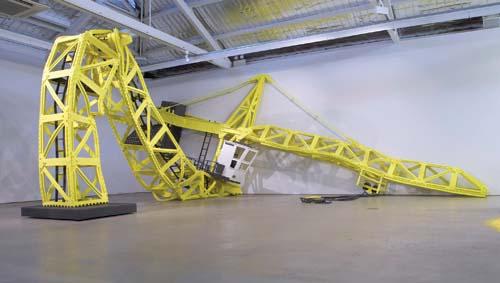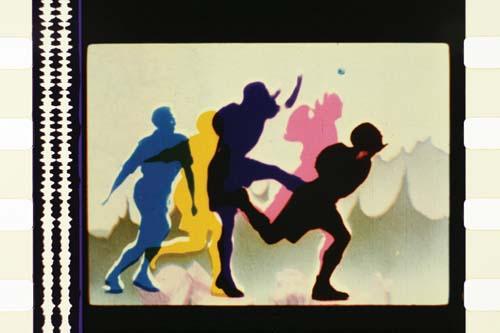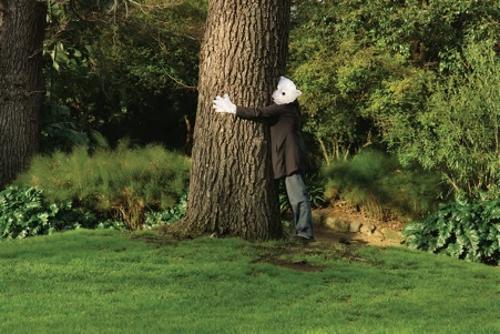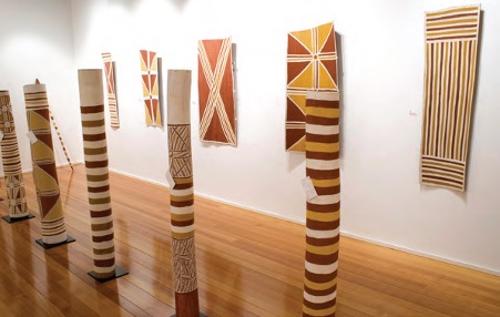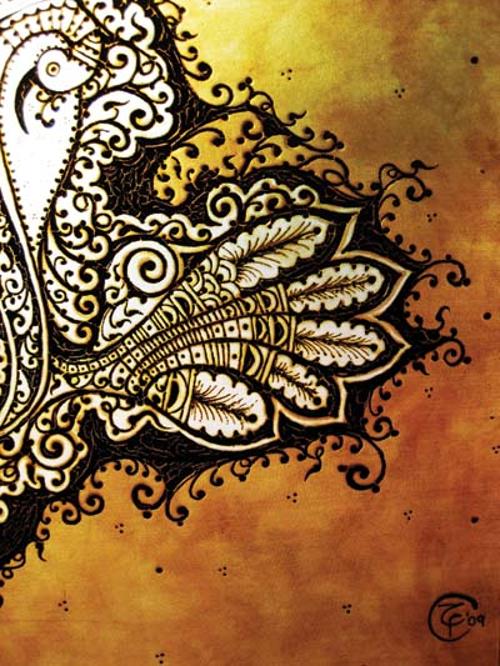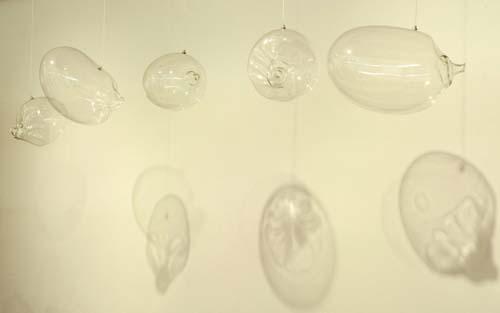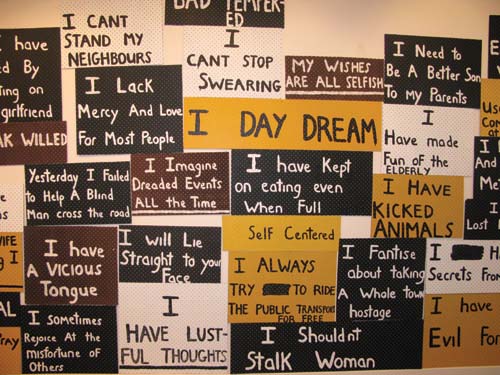
'Nobody Likes a Show Off', curated by Kirrily Hammond at the Monash University Museum of Art, is the largest survey ever of Richard Lewer's work. With pieces divided thematically over MUMA’s three exhibition spaces, visitors are able to contemplate with focus Lewer’s subjects ranging from crime, religion and suburbia to his boxing club; whilst also tracing linkages across the gallery that peel away the complexity of an art practice that embodies a succinct, powerful set of personal and at times poignantly humorous critical exchanges.
I n Lewer’s 'Stations of the Cross' (2008) series of paintings, violence is not only symbolic, but made physical through the visceral nature of the artist’s use of pink, fleshy enamel. The reference point of the work is deflected from the mythologised act of Christ’s execution to a semiotic representation of the body. In past the aestheticisation of Christ’s crucifixion has served to eliminate the 'actual’ physicality of his death, leaving behind a more powerful, fear-inducing, symbolic violence. Lewer’s visceral stations of the cross however show Christ and the Romans as essentially flesh and blood. We project our knowledge of the Catholic religion onto these works, yet the paintings manage to remain removed from our preconceived readings, inhabiting a kind of universal human commonality -- of physicality and flesh. It is the intimacy of Lewer’s connection to these topics, apparent even without a knowledge of his Catholic upbringing in New Zealand, that is deeply moving without being self-consciously sentimental. Like the difference in the connections of a new-born child whose umbilical cord is severed but who cannot be cut from the emotional linkage with its mother, Lewer’s life and work seem inescapably tied. Perhaps it is this umbilical cord the artist tries to cut in 'Woodchop' (2000), where he enacts the physical violence of chopping a log in a gallery. A clear purging, there is applause from onlookers as he succeeds in cutting through the wood. Through projecting the symbolism of this act the artist can experience brief freedom, however the symbolic linkage of Lewer’s life and practice remains unsevered.
While a crossover between art and life is arguably inescapable in any creative practice, Lewer’s subjectivity is most effective in its ability to disintegrate any sense of mediation or differentiation between the two. The artist sees the notions of skill, discipline and training as links that tie not only the elements of his practice together, but also his practice to the broader context of his life. This unmediated dialogue is perhaps most apparent in works such as 'Pegboard Confessions' (2009), where Lewer scrawls on pegboard seemingly unreserved admissions given at a Catholic confession booth (a throwback to his religious upbringing). This is art recounting life, yet his commentary renders such a distinction as unimportant. Lewer’s texts seem particularly ‘real’ not because they are unique or different in nature to other critical exchanges often presented through art, nor for their subjects, but because of the artist’s individual ability to imbue a sense of closeness to his subject matter without alienating the viewers. We are invited into Lewer’s experiences, but can so easily draw them into our own.
'Fist a’ cuffs' (2001) is another example of an interplay in Lewer’s life and practice through discipline. Originally a performance at Conical as part of the Fitzroy space’s debut exhibition Adrift in 2001, the work is exhibited at MUMA as a video. What began as an art exchange (challenging fellow artist Luke Sinclair to a boxing match cum performance art work), saw Lewer seeking to understand this act’s language and rituals (through training and joining a boxing club), and subsequently adopting this method of dialogue continually and externally to his art practice (Lewer still boxes at the Northside Boxing Gym). Lewer would complete the cycle, re-presenting this now ‘real life’ physical exchange of boxing in his art practice later ('Committee', 2007; 'Northside Boxing Committee - David (the Prezz), Big Russ, Stu, me (Rash), Adrian, Danny, Mick and Terry', 2008). The slight element of absurdity in 'Fist a’ cuffs' shows the artist’s tendency to use his unique and somewhat black sense of humour as a device in communicating complex and multifaceted critiques.
It seems at first fitting that Richard Lewer’s survey 'Nobody Likes a Show Off' sits deep in Melbourne’s suburbs, at the Monash University Museum of Art. Though Lewer’s work presents a reflection of Australian (and New Zealand) suburbia, it is not entirely a critique of the domestic as it would be so easy to suggest. The subjectivity with which Lewer creates his work across painting, drawing and performance, and his willingness to place his personal interiority at the centre of much of his practice, means that domestic and suburban commonality becomes a vessel through which we can explore the artist’s reality, and in turn reflect our own.


